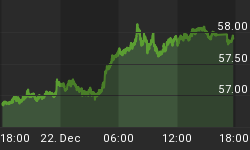The Congress has passed legislation raising the public debt limit to allow spending to continue essentially as before without reducing current entitlements, the size of government, automatic increases to government agency budgets or increasing current taxes. Congress was able to accomplish that feat by abdicating its responsibilities by transferring it into the future to a small "super committee".
Investors are unimpressed. Stocks did not rise and Treasuries continue to attract safe haven buyers (10-yr yield under 2.7%). We need a few days to seehow sentiments settle out.
The legislation is a giant nothing, however. The first year expense savings (should it actually occur) is reportedly $25 billion (about 7/10th of 1% of the 2010 federal budget) and hardly a stretch. On the other side of the ledger, the debt limit was increased by an amount nearly 100 times the size of the first-year projected savings. In less than 30 minutes of passing the legislation, Senator Schumer said now is the time to get back to job creation (translation: spending), and the President gave a speech saying now is the time to createjobs and improve infrastructure (translation: spending).
All of the struggle was about the public debt of just over $14 Trillion, when the real debt of the country when the present value of entitlements unfunded by the present value of taxes plus the public debt is considered, it is about $66 trillion (more than 4 times our GDP and about 30 times our 2010 federaltax revenue). Not a pretty picture. Not something an analyst would call solvent.
In 2010 the federal budget was 3.456 Trillion, and the tax receipts were 2.163 Trillion, for a deficit of 1.294 Trillion.
Eventually spending must fall (military, government and entitlements) and taxes must rise (on the rich and middle class). States have been raising taxesalready, and those marked "temporary" are unlikely to expire.
The rich can't pull the wagon alone. As of 2008, the top 5% of taxpayers (5,598,423 in number) had adjusted incomes of more than $159,619 (hardly rich,but let's use them anyway).
Their total taxable income was 2.926 Trillion, and their average tax rate was 17.21%. If the top five percent (most of whom are not billionaires or hedge fund managers or corporate jet owners) were required to shoulder the burden to pay the 1.294 Trillion budget deficit, their average tax rate would haveto go up 45 points to over 62% (4x the amount of money they pay now).
If the top 50% of tax payers (nearly 70 million in number), whose incomes are over 33,000 (aggregate taxable income 7.352 Trillion) were to pay the entire deficit in new taxes, their average tax rate would have to rise from 13.65%to about 31.2% (more than 2x the amount of money they pay now).
In addition to seeking profits growth opportunities, investors need to think through likely changes to the tax implications of their investments as a resultof the debt crisis.
Dividends are likely to be taxed more heavily when Bush era tax cuts most likely expire. A special 3.8% Medicare surtax on investment income will begin in 2013. The super committee may recommend adopting the Obama Commission proposal to make interest on new issue municipal bonds taxable. If that happens, it is not inconceivable that tax-exempt outstanding municipal bonds would be cometaxable too. Wither capital gains?
And what about lower income taxes and a value added tax? -- no that's silly - it would be HIGHER income taxes PLUS a value added tax.
Time to start thinking through long-term tax scenarios now, as well as where the gain opportunities will be. The outcomes are not yet clear, but the market will begin to anticipate them before they become fact. Tax status quo is theleast likely outcome.















